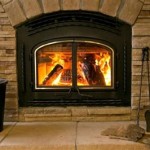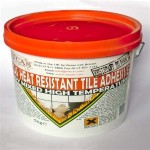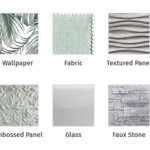Here's an article focusing on natural gas fireplace insert reviews, adhering to your specifications:
Natural Gas Fireplace Inserts: A Comprehensive Review
Natural gas fireplace inserts offer a convenient and efficient alternative to traditional wood-burning fireplaces. They provide the ambiance of a fire without the mess, hassle, and environmental concerns associated with wood. Selecting the right natural gas insert requires careful consideration of various factors, including heating capacity, efficiency, features, and aesthetic appeal. This article will explore some key aspects to consider when evaluating natural gas fireplace insert reviews to aid in making an informed decision.
A natural gas fireplace insert is essentially a self-contained heating appliance designed to fit directly into an existing fireplace opening. It typically consists of a firebox, burner system, venting, and a decorative surround or facade. Natural gas is a clean-burning fuel source that produces less particulate matter and greenhouse gases compared to wood. Furthermore, natural gas inserts offer the convenience of instant on/off operation and precise temperature control, often through a remote control or thermostat.
When browsing natural gas fireplace insert reviews, it's important to understand the different types of inserts available. Direct vent inserts are the most common and safest option, as they draw combustion air from outside and vent exhaust gases directly outdoors through a sealed system. Vent-free inserts, also known as ventless inserts, do not require a chimney or vent and instead burn the gas more completely, minimizing emissions. While vent-free models offer greater installation flexibility, they may not be suitable for all homes due to potential indoor air quality concerns and local building codes. Another type is natural vent which uses existing chimney.
Key Points to Consider When Evaluating Reviews
Navigating the world of natural gas fireplace insert reviews can be overwhelming. Prioritizing certain key points can help streamline the process and ensure you select an insert that meets your specific needs and preferences.
Heating Capacity and Efficiency
One of the primary considerations is the heating capacity of the insert, measured in British Thermal Units (BTUs). The BTU rating indicates the amount of heat the insert can generate per hour. To determine the appropriate BTU rating for your space, consider the size of the room you intend to heat, the insulation levels in your home, and the climate in your region. Generally, a larger room or a poorly insulated home will require a higher BTU rating. Online BTU calculators can provide a starting point, but consulting with a qualified HVAC professional is recommended for accurate sizing.
Alongside heating capacity, it's crucial to examine the energy efficiency rating of the insert. This is typically expressed as a percentage and indicates how much of the fuel consumed is converted into usable heat. A higher efficiency rating translates to lower energy bills and reduced environmental impact. Look for inserts with an efficiency rating of 70% or higher. Some models may even qualify for energy efficiency rebates or tax credits, further reducing the overall cost of ownership.
Reviews often highlight user experiences with the insert's heating performance. Pay attention to comments about how evenly the insert distributes heat, how quickly it warms up the room, and whether it maintains a consistent temperature. Some inserts may feature a built-in blower to circulate heat more effectively, which can be particularly beneficial in larger spaces.
Features and Functionality
Natural gas fireplace inserts come equipped with a range of features and functionalities that can enhance convenience and control. Remote controls are a common feature, allowing you to adjust the flame height, temperature, and blower speed from the comfort of your couch. Thermostatic controls enable you to set a desired room temperature, and the insert will automatically adjust its output to maintain that temperature.
Some inserts offer programmable timers, allowing you to schedule the insert to turn on and off at specific times, further optimizing energy efficiency. Safety features, such as automatic shut-off mechanisms in case of overheating or gas leaks, are also essential. Look for inserts that are certified by independent testing agencies, such as the Canadian Standards Association (CSA) or Underwriters Laboratories (UL), to ensure they meet safety standards.
The type of flame display is another important consideration. Some inserts feature realistic log sets and flickering flames that mimic the look of a traditional wood-burning fire, while others offer more contemporary designs with glass media or ribbon flames. Consider the aesthetic appeal of the flame display and how it complements your home décor.
Installation and Maintenance
Proper installation is crucial for the safe and efficient operation of a natural gas fireplace insert. It is typically recommended to hire a qualified and certified installer who is familiar with local building codes and regulations. The installation process may involve running a gas line to the fireplace, installing venting, and connecting the insert to the gas supply. Reviews may mention the ease of installation or any challenges encountered during the process.
Also consider the ongoing maintenance requirements of the insert. Regular maintenance typically involves cleaning the burner and venting system to ensure optimal performance and prevent carbon monoxide buildup. Some inserts may require more frequent maintenance than others, depending on the design and usage. Check reviews for comments about the ease of maintenance and the availability of replacement parts.
Venting costs can also vary significantly depending on the type of insert and the existing chimney setup. Direct vent inserts typically require new venting, which can add to the overall cost. Vent-free inserts, on the other hand, do not require venting, but they may have limitations on where they can be installed.
Analyzing User Reviews for Specific Models
Once you've narrowed down your search to a few specific models, it's time to delve deeper into user reviews. Look for reviews from verified purchasers who have used the insert for an extended period. Pay attention to both positive and negative reviews, and consider the overall consensus. Be wary of reviews that are overly positive or negative, as they may be biased.
Specifically, concentrate on reviews that address the key points discussed earlier: heating capacity, efficiency, features, installation, and maintenance. Look for comments about the insert's ability to heat the intended space, the accuracy of the thermostat, the ease of use of the remote control, and the reliability of the ignition system. Also, note any recurring issues or problems that are mentioned by multiple reviewers.
When reading negative reviews, consider the context and whether the issue is specific to the individual user or a more widespread problem. Some negative reviews may be related to installation errors or improper usage, rather than a defect in the insert itself. However, if multiple reviewers mention the same issue, it's a red flag that warrants further investigation.
Consider reviews from multiple sources such as the manufacturer's website, retail website, and independent review sites. Combining this information will give you a more comprehensive understanding of the product's real-world performance and potential pros and cons.
Long-Term Cost Considerations
While the initial purchase price of a natural gas fireplace insert is a significant factor, it's also important to consider the long-term costs associated with ownership. This includes the cost of natural gas, maintenance, and potential repairs. A more efficient insert may have a higher upfront cost, but it can save you money in the long run through lower energy bills. Also, factor in the cost of professional installation, which can vary depending on the complexity of the project.
Warranty coverage is another important consideration. A longer warranty period provides greater peace of mind and protection against potential defects or malfunctions. Pay attention to the terms and conditions of the warranty, including what is covered and what is not. Some warranties may cover parts and labor, while others may only cover parts. Also, be aware of any limitations or exclusions in the warranty.
The lifespan of a natural gas fireplace insert can vary depending on the quality of the components and the frequency of use. High-quality inserts can last for 15 years or more with proper maintenance. However, cheaper models may have a shorter lifespan. Reviews may mention the durability and longevity of the insert, as well as any common issues that may arise over time.
By carefully considering these factors and analyzing natural gas fireplace insert reviews, you can make an informed decision and select an insert that provides years of reliable and efficient heating.
.aspx?strip=all)
Top 11 Gas Fireplace Insert Trends Of 2024

Kingsman Clean View Gas Fireplace Insert Review Fireplaces Direct Learning Center

Reviews For Duluth Forge Dual Fuel Ventless Gas Fireplace Insert 32 000 Btu T Stat Control Model Fdf400t Zc Pg 1 The Home Depot

White Mountain Hearth Vented Gas Log Set Review Fireplaces Direct Learning Center

Reviews For Pleasant Hearth Universal Circulating Zero Clearance 32 In Ventless Dual Fuel Fireplace Insert Pg 1 The Home Depot

How Much Does A Gas Fireplace Insert Cost Forbes Home

Enviro The E30 Gas Fireplace Insert Toronto Home Comfort

Chaska 34 Gas Fireplace Insert Kozy Heat

Top 5 Reasons To Consider A Fireplace Inserts Wi Ia Il

Enviro The E30 Gas Fireplace Insert Toronto Home Comfort








